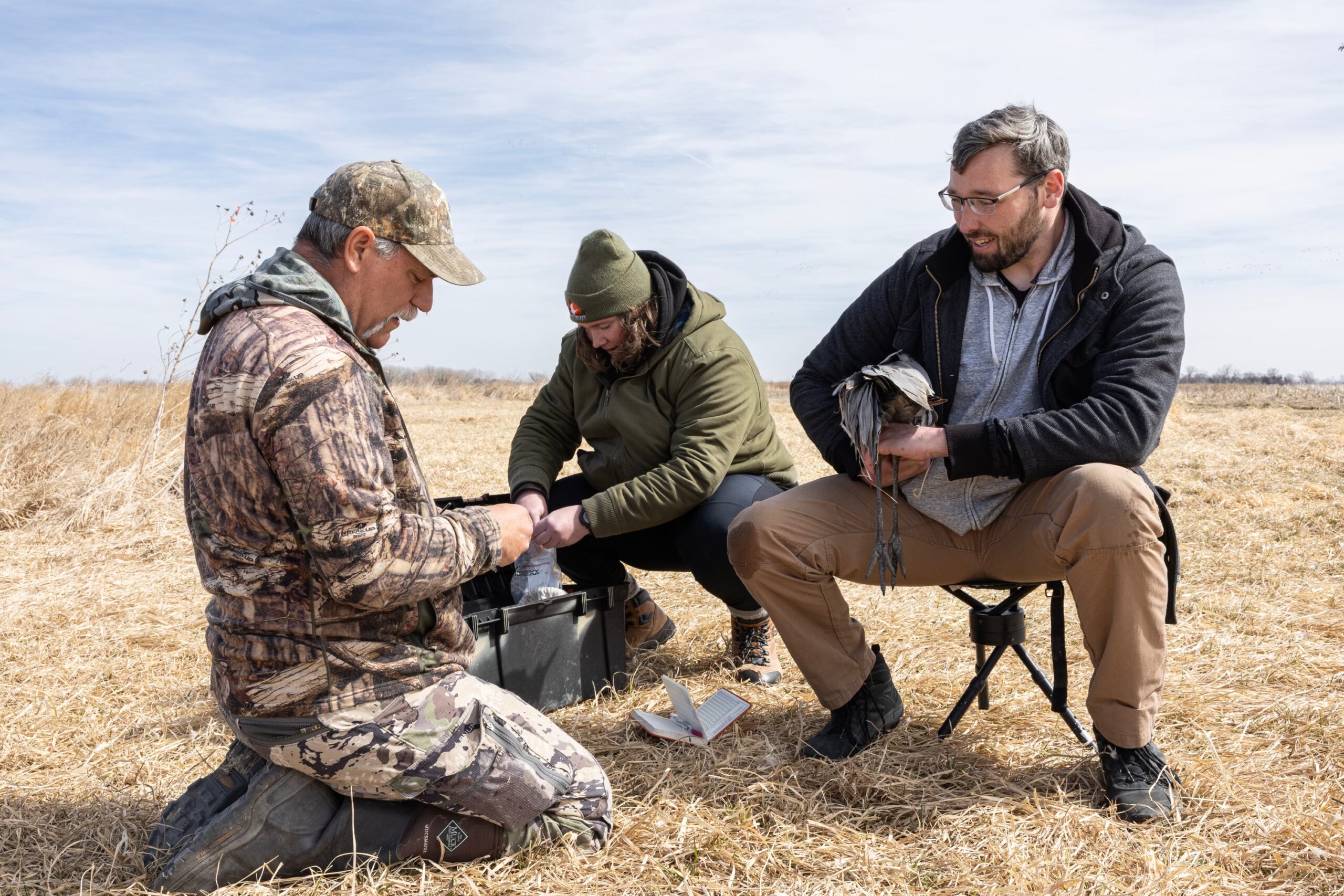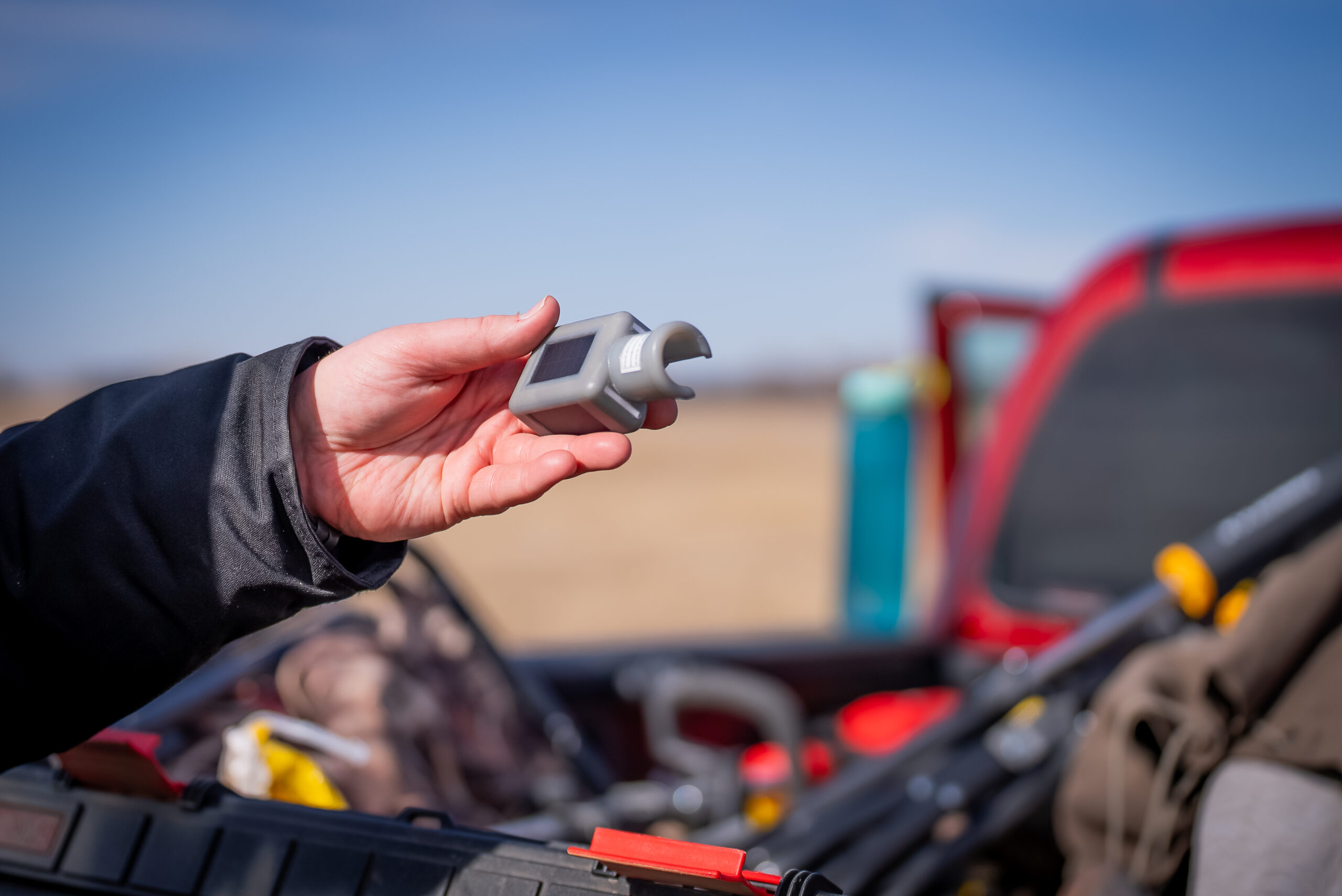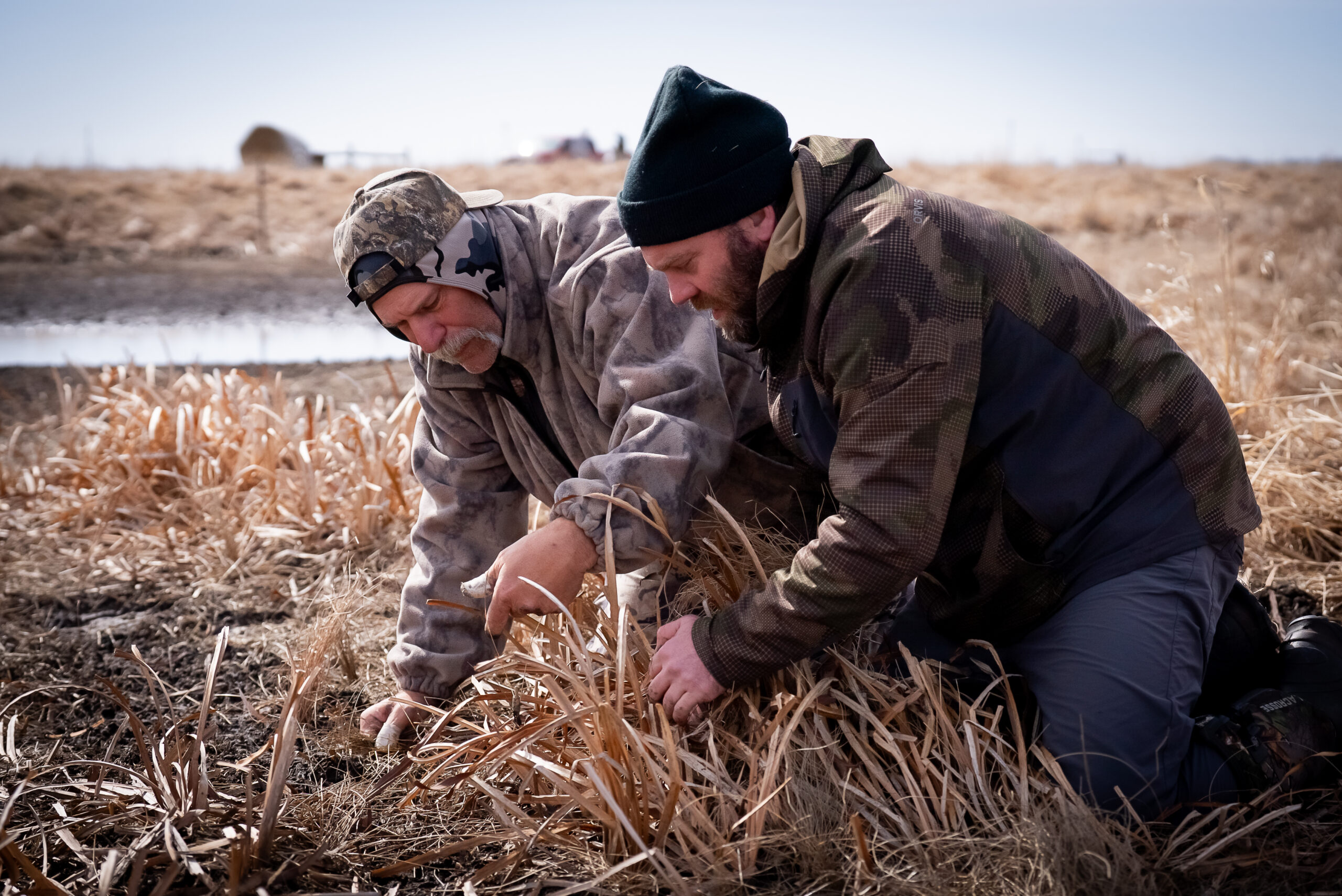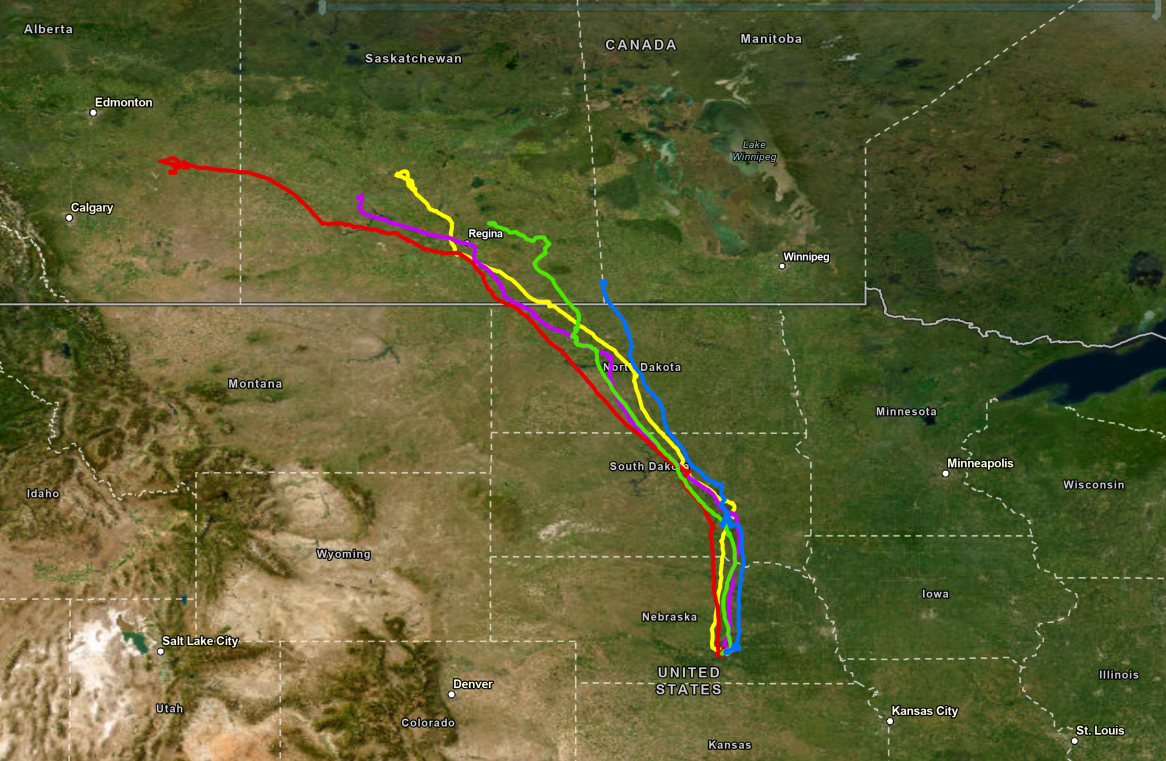
This Spring marked the beginning of our Sandhill Crane GPS tracking project. This is entirely donor funded and is being conducted in partnership with the United States Geological Survey and the International Crane Foundation. Our objectives include examining foraging distance from the Platte River, determining if migration patterns are shifting, and learning where the Cranes that come through Central Nebraska are nesting.

To accomplish these goals, the Crane Trust acquired leg-mounted GPS trackers, which should last for 2-5 years, and began attaching them to Sandhill Cranes we captured in Central Nebraska. The capture of the Sandhill Cranes and attachment of the GPS trackers was a delicate process led by David Brandt, a retired USGS employee with decades of experience in crane capture and handling. Under his guidance, we used a leg snare technique to capture individual cranes for use in this study.

The Crane Trust Science Team gained a great deal of knowledge this Spring, being taught how to select ideal sites for crane capture, prepare snare lines and blinds, and properly handle cranes. While learning these procedures and skills, the Crane Trust Science Team was also able to deploy GPS tracker onto 5 Sandhill Cranes this year. This accomplishment represents a great start to the study! The Science Team hopes to have even greater success next year when they can apply all of the experience they gained throughout this Spring.

This project would not be possible without the generous donors willing to fund important scientific projects in Central Nebraska. Thank you!
As a bonus, we have an update on the locations of the cranes that we have placed trackers on. Currently, all cranes with trackers on them are in Canada. Three of our cranes are in Saskatchewan, one in Alberta, and one in Manitoba.
Abe Kanz,
Director of Conservation Research
Photo 1: Matt Urbanski
Photo 2 & 3: Kylee Warren